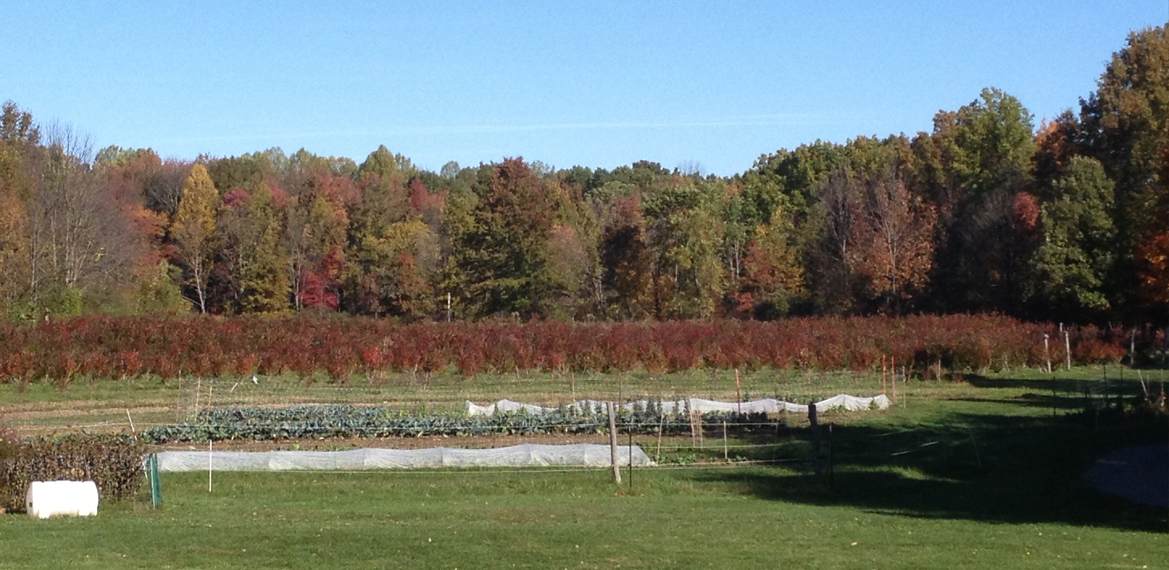Land Trusts
 What Are Land Trusts?
What Are Land Trusts?
Land trusts are generally nonprofit, charitable organizations that own and manage land, or own and manage certain property interests that attach to the land. They are usually tax exempt organizations, organized under IRS Code Section 501(c)(3) or 501(c)(2).
Conservation land trusts purchase or accept donations of land or easements on land to limit development and preserve wildlife habitat, farmland, forests, and open space. They often work cooperatively with landowners to conserve land, and to ensure that land previously acquired or placed under a conservation easement continues to be properly protected.
Community land trusts can own and manage land for a number of different purposes, including affordable housing, parks and playgrounds, community gardens, and open space generally.
What Do Land Trusts Protect?
Conservation land trusts can focus on protecting natural habitat, water quality, or scenic views, ensuring that the land is available for farming, forestry, or outdoor recreational use, or protecting other values provided by open land. Community land trusts can have many different purposes, including providing affordable housing, affordable commercial rent, and green space for residents.
 Legal Tools of the Land Trust Trade
Legal Tools of the Land Trust Trade
To achieve their purposes, conservation land trusts can own land and restrict the use of that land, or they can own property interests in the land. These interests can include conservation easements, affirmative agricultural easements, options to purchase at agricultural value (OPAVs), and more.
In addition to traditional conservation projects, land trusts can promote conservation in innovative ways, such as:
- Initiate rural and urban agricultural projects, like incubator farms or community gardens
- Promote commercial spaces to serve local communities
- Establish affordable rental and cooperative housing projects
- Conserve land or urban green space
- Steward land for the benefit of the community and for farmers and foresters
Learn more about how farmers work with land trusts through these real-world farmer stories:
Types of Land Trusts
Land trusts come in different varieties, including conservation land trusts, preservation trusts, community land trusts, and more. Government entities, either on their own or in partnership with a land trust, can also be the holder of easements to protect and conserve farmland.
Conservation Land Trusts
A conservation land trust is an organization that establishes ownership for the purpose of making sure land stays undeveloped and protected for future generations. The two basic ways conservation land trusts use to do this are 1) purchasing land or 2) purchasing a conservation easement on land.
Some examples of conservation land trusts and related organizations mentioned in this toolkit include:
- Tompkins Conservation – California-based land trust dedicated to protecting the ecology and wildlife of parks and forests on a long-term basis.
- Vermont Land Trust – Vermont-based land trust that saves the land that makes Vermont special, including farmland and forest.
- Equity Trust – Massachusetts-based land trust committed to changing the spirit and character of our material relationships.
- Peninsula Open Space Trust – Protecting and caring for open space in and around Silicon Valley.
- Middlebury Land Trust – Connecticut land trust to help preserve Middlebury, Connecticut’s natural areas for future generations.
- Eddy Foundation – Works in New York, California, and the Dominican Republic to preserve open space for the welfare of all human citizens and all plants and animals.
- Mount Grace Conservation Land Trust – Massachusetts-based regional land trust that protects significant natural, agricultural, and scenic areas, and encourages land stewardship in Massachusetts for the benefit of the environment, the economy, and future generations.
- Yggdrasil Land Foundation – National land trust that protects sustainable and biodynamic farmland, creates land access for farmers, and cultivates agriculture-based regional economies.
- Land Trust Alliance – A group of land trusts across the US devoted to promoting the health and well-being of land for places to play and exercise, build community, and connect with nature.
Community Land Trusts
Community land trusts are charitable, community-based organizations, led by community residents and public representatives, and have primarily been used to promote long term housing affordability. In the farming context, community land trusts generally work to ensure community stewardship of land by ensuring permanent access, control, affordability, and stewardship of the land for the community and future generations.
Community land trusts are generally designed to ensure land is used to benefit the local community where that land is located. In the farming context, community access to farmland and forests owned by a community land trust is generally provided to farmers through a long term lease.
Examples of community land trusts that provide affordable housing, among other things, include:
- Champlain Housing Trust – One of the largest community land trusts in the country, with over 2,000 household members in rental apartments, co-ops, condos and single family homes.
- Dudley Street Neighborhood Initiative – A land trust based in the Dudley section of Roxbury, Massachusetts, encompassing housing, a Town Common, gardens, urban agriculture, and open spaces for play.
- Berkshire Community Land Trust – Owns and leases land for community homes, farms, and businesses.
- National Community Land Trust Network – Group of community land trusts that promote strategic community development and permanently affordable housing to benefit lower-income families.
- Southside Community Land Trust – Serves people in economically-challenged urban neighborhoods where fresh produce is scarce, who, as a result, are at risk for life-threatening diet-related chronic diseases.
- Many more community land trusts are listed in a directory at Community-Wealth.org, a website that contains alot of information about various community wealth building activities.
- There are many resources for those seeking to establish community land trusts at The Center for Community Land Trust Innovation.
Community Land Trusts Holding Agricultural Land
This type of land trust combines certain aspects of both community and conservation land trusts.
Agricultural land held “in common” by a community land trust can provide many benefits.
- Takes land out of the real estate market and thus limits investors’ ability to speculate in land;
- Provides for ownership and stewardship by the local community in which the agricultural land is situated;
- Gives the community the ability to offer long term, secure, and equitable tenure to local farmers, and to require healthy farming practices;
- Can allow for significant interaction between the local community and local farmers in a shared space in which everyone is invested.
SPOTLIGHT on Agrarian Trust’s Agrarian Commons
Agrarian Trust is a national nonprofit organization whose mission is to support land access for next generation farmers. In May 2020, Agrarian Trust supported 10 local communities to create Agrarian Commons across the US. Building on models of land ownership for local communities built by civil rights activists such as Charles and Shirley Sherrod (New Communities, Inc.), these local projects provide an example of how community land trusts that hold agricultural land can actually work. Each Agrarian Commons:
- is a non-profit organization
- holds agricultural land in and for a local community, issuing long term, equitable leases to farmers for regenerative, diversified food production for the local community
- is governed by a board of directors consisting of farmers who are leasing from the Commons, community stakeholders, and Agrarian Trust representatives.
- builds community, farm viability, local agrarian economies, and places for connection and refuge
Here is a Guide for creating an Agrarian Commons, or any community land trust for agricultural holdings based in community; these tools can be used for creating an Agrarian Commons in partnership with Agrarian Trust, or to help develop a community land trust that is not an Agrarian Commons. The purpose of sharing these documents is to encourage many different types of shared land stewardship projects, to support more commons creation in all the diverse ways a community may find useful. More documents will be shared as they are created.
Government Partnerships With Farmers And Land Trusts
At the local, state, and federal levels, government agencies can also be holders of farm-related easements, either as a government entity or in partnership with a land trust organization. Government-held easements can be on private property; governments can also lease government-owned land to farmers directly. Real-world examples include:
- Countryside Conservancy in partnership with Cuyahoga Valley National Park.
- Southside Community Land Trust in partnership with the State of Rhode Island.
- Dakota County, Minnesota Farmland and Natural Areas Protection Program.
- The New Hampshire Land and Community Heritage Investment Program.
Examples of Farmers Working With Land Trusts
Success Story:
Full and By Farm

When James Graves and Sara Kurak of Full and By Farm first found their property in Essex, New York, it was owned by the nonprofit Eddy Foundation and would have been too expensive for James and Sara to purchase at market price. To make the land affordable, the Eddy Foundation sold 100 acres to James and Sara but simultaneously purchased a conservation easement on those 100 acres, reducing the net cost to James and Sara and fulfilling the Foundation’s conservation goals. Learn more about Full and By Farm and the process of negotiating conservation easement terms here.
Success Story:
Greenfield Berry Farm

The Countryside Initiative Program is a program of the Countryside Conservancy, a nonprofit dedicated to preserving the rural character of the Cuyahoga Valley in Cuyahoga, Ohio. The Countryside Conservancy partnered with Cuyahoga Valley National Park to create the program, which acts as a matchmaker between farmers and farmland in Cuyahoga Valley National Park.
The farmland in the park is leased by the National Park Service to farmers who are committed to sustainable agriculture and responsible stewardship of the land. There are currently nine farms on the park, including Greenfield Berry Farm, a pick-your-own berry farm owned and operated by Daniel and Michele Greenfield. Learn more about how Daniel and Michele worked with the federal government and the Countryside Initiative Program to access land here.
 Potential Land Trust Challenges
Potential Land Trust Challenges
Although working with land trusts can be beneficial for farmers, landowners and land-seekers should be aware that working with land trusts has its challenges.
- Working with a land trust to secure a conservation easement or other conservation tool can be complex, time-consuming, and costly.
- Landowners who own farmland with a bank mortgage on the property may have difficulty working with a land trust.
- Land trusts and farmers may not share a common mission. For example, a land trust dedicated to preserving wildlife may not be a good match to conserve a working farm.
- Once a land trust owns a conservation easement on property, the landowner must obtain consent from the land trust for certain activities, and the land trust can prohibit the landowner from building more housing or other structures that could be helpful to their business.
 How An Attorney Can Help
How An Attorney Can Help
The Attorney’s Role
It’s not an attorney’s job to make decisions for farmers or to set farm transfer goals. Instead, attorneys can provide information about pros and cons of different options, advice about what is common versus unusual, fair versus unfair, etc. Attorneys can help farmers understand the range of possible farm transfer goals and help narrow down individual options so that farmers can make final decisions.
How An Attorney Can Help With Land Trusts
- Negotiate an easement or OPAV sale or donation to a land trust.
- Review or draft easement sale or donation documents.
- Explain the pros and cons of a land trust deal.
- Create a strategy for combining a land trust deal with other transfer or conservation tools.
- Help farmers understand the possible tax implications of donating or selling an easement to a land trust.
Related Legal Tools



The Center for Agriculture and Food Systems is an initiative of Vermont Law School, and this toolkit provides general legal information for educational purposes only. It is not meant to substitute, and should not be relied upon, for legal advice. Each farmer’s circumstances are unique, state laws vary, and the information contained herein is specific to the time of publication. Accordingly, for legal advice, please consult an attorney licensed in your state.

